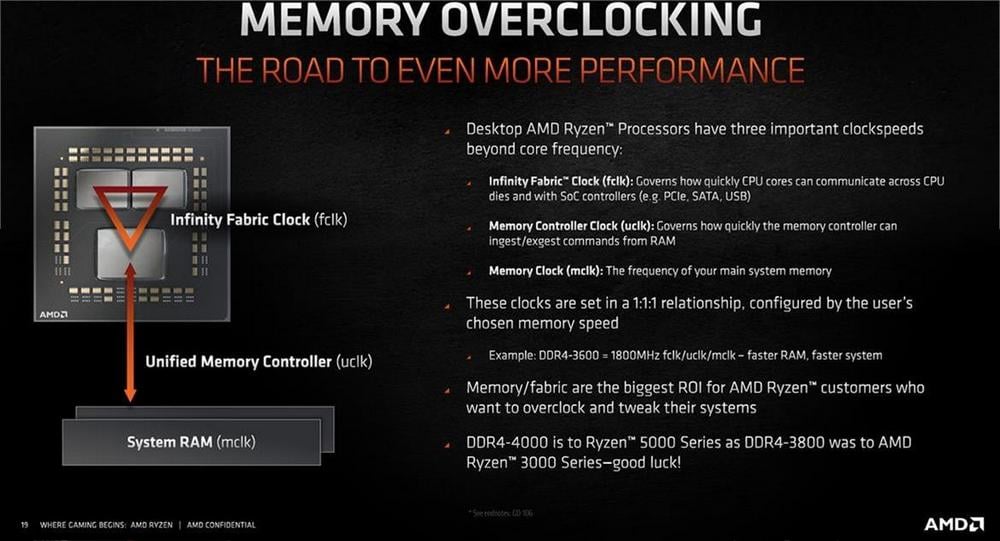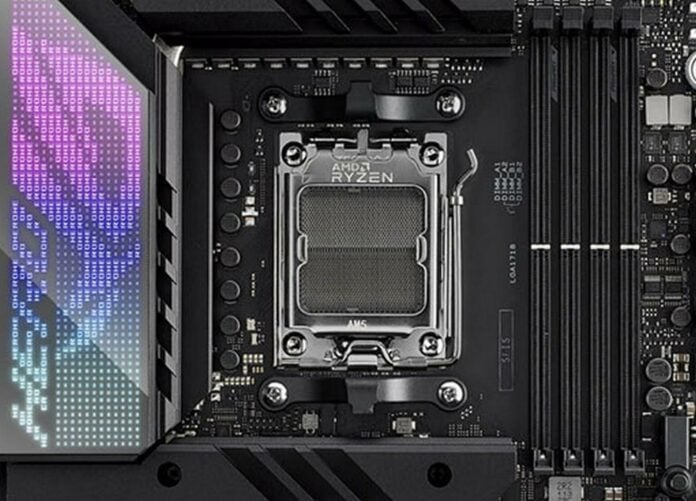Zen 4-based Ryzen 7000 processors could benefit from being paired to DDR5-6000 memory according to a recent report.
Like their predecessors, Ryzen 7000 CPUs may have an optimal memory configuration offering the best performance in gaming and latency-sensitive workloads. A recent report from Wccftech suggests that DDR5-6000 memory could be that perfect match, allowing for a 1:1 ratio between memory and Infinity Fabric. As a reminder, Ryzen 3000 memory sweet spot was DDR4-3800, while Ryzen 5000 took a liking to DDR4-4000.
For those of you not following every bit of technical news, here is a fast recap of key jargon:
- Infinity Fabric Clock (FCLK): Governs how quickly CPU cores can communicate across dies or with SOC controllers (PCIe, SATA, USB).
- Memory Controller (UCLK): Defines how quickly the memory controller can send commands to RAM.
- Memory Clock (MCLK): The memory frequency.

So, with DDR5-6000, a 1:1 ratio means that Infinity Fabric and memory are running at 3,000MHz, which equals 6,000MT/s. Why 3,000? because DDR stands for Double Data Rate, thus, we have data transferring on both the rising and falling edges of the clock signal. To keep stability at speeds beyond the Fabric capacity (3,000MHz in our case), the memory and Infinity Fabric configuration will be set to 2:1, forcing the Infinity Fabric to run at half speed (1,500MHz).
With previous Ryzen generations (Matisse and Vermeer), this resulted in (relatively speaking) poor performance. But it’s not only AMD. Intel’s Gear 2 and Gear 4 modes representing 2:1 and 4:1 configurations, also display similar behaviour. So, why would anyone go beyond a 1:1 ratio? Well, a greater ratio allows for higher frequencies via overclocking, resulting in quicker data transfers, at the cost of latency. Outside of tasks desperately needing memory bandwidth, there is no reason to go further.
DDR5 might still seem like a pointless or expensive upgrade to a lot of us. However, we are approaching a point where DDR5 memory becomes the norm. It also helps that DDR5 prices aren’t as high as in its debut. Today, a 32GB (2x16GB) kit of DDR5-6000 costs around £250. For comparison, Ryzen 5000’s sweet spot – 32GB DDR4-4000, now costs £90 less at around £160. Nevertheless, DDR5 price is dwindling slowly, and with the demand that AM5 will bring, economies of scale should bring that price even further down.
It just so happens that a well-priced DDR5-6000 memory kit is being put through its paces at Club386 HQ as we speak. Stay tuned for a full review.


